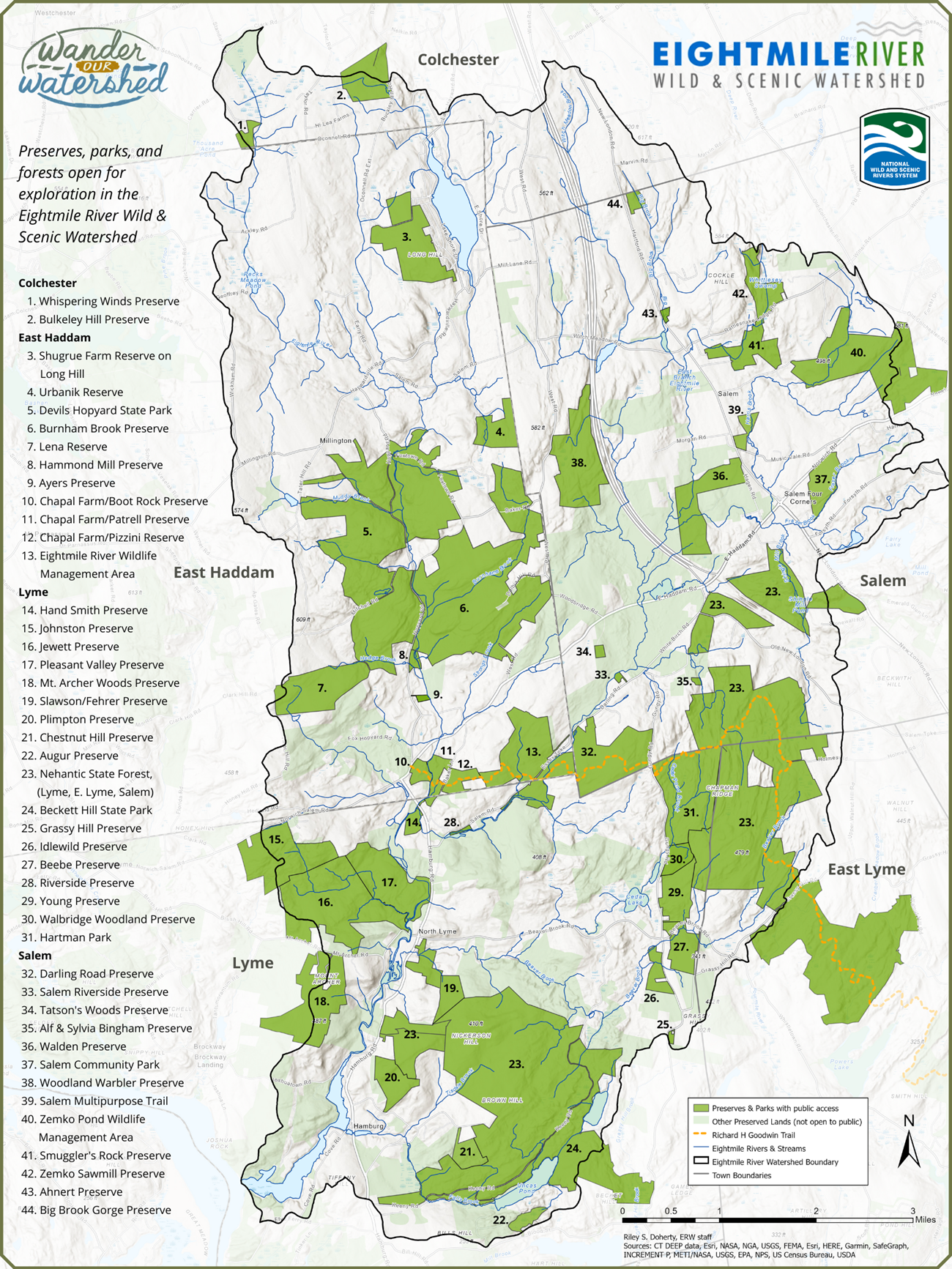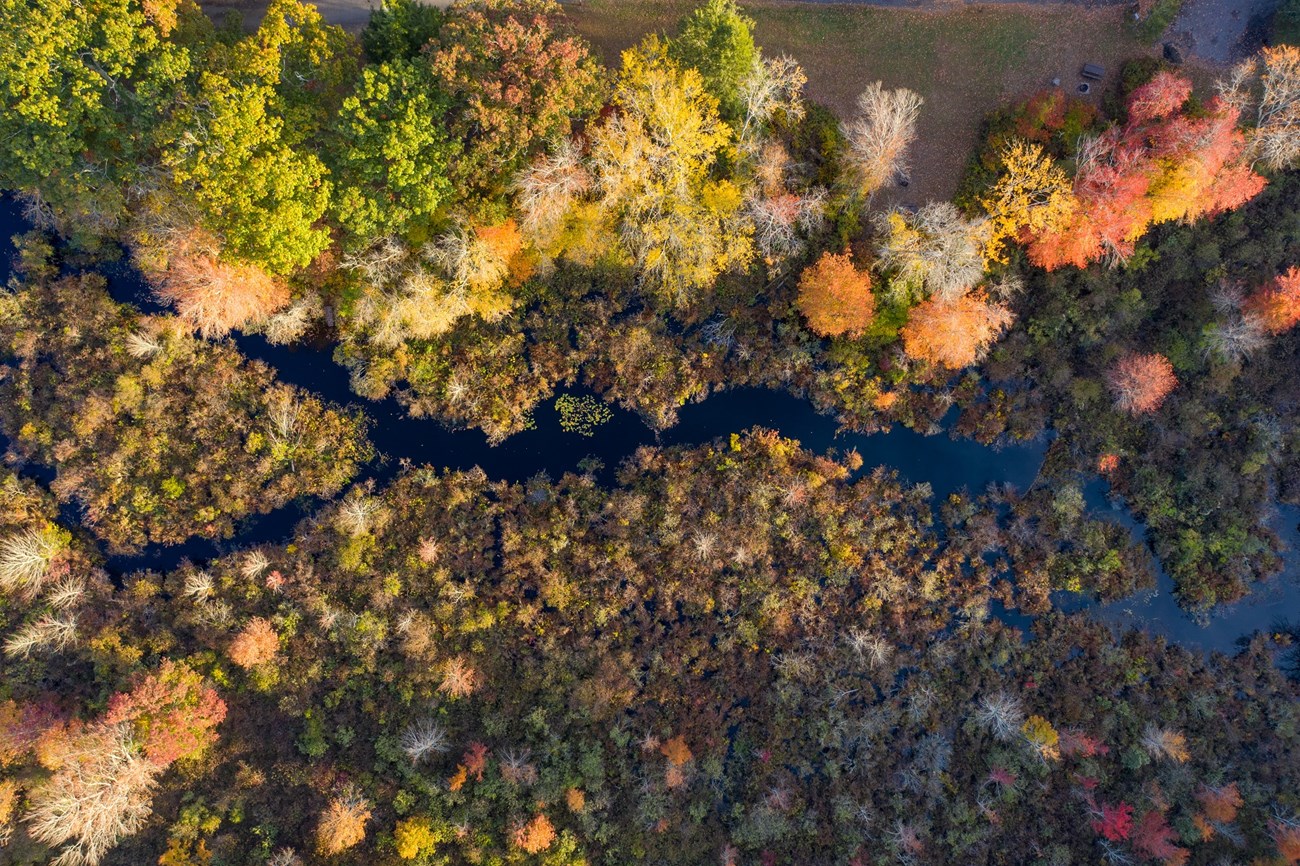Last updated: May 17, 2021
Article
Conservation through Partnerships | The Preservation of a Watershed’s Open Space

There’s much to love throughout the 62 square miles of the Eightmile River Wild and Scenic Watershed. From the intact forests to the beautiful Chapman Falls, this special watershed delivers on its both ‘wild’ and ‘scenic’ name. Although presented with historical challenges such as dams and development, the thriving watershed is home to unique wildlife and offers a respite for recreationalists. In one Connecticut Public Radio story, Tony Irving, the Eightmile Coordinating Committee Chair, highlights the beauty of the area, the successful removal of a small dam, and the importance of continued preservation in the watershed.
The story of management and preservation in the Eightmile River Wild and Scenic Watershed starts long before its federal designation. There are several state and federally recognized nations in Connecticut, including the Eastern Pequot, Golden Hill Paugussett, Mashantucket Pequot, Mohegan and Schaghticoke peoples. At least 8,000 years ago, Native American tribes such as the Wangunk, the Western Nehantic, the Pequot, and the Mohegan worked within this landscape. Management occurred through activities such as ‘prescribed burns’, planting crops, hunting game, and ice fishing.
When Europeans settled the land in Connecticut, they began to clear forests in order to farm, produce lumber, and build homes. These activities resulted in only 25% of the State being forested in 1820, and the eradication of various native species such as the beaver. Once people started expanding westward, populations throughout the region were reduced, allowing forest regrowth and the return of some extirpated species.
The Eightmile watershed was not as harshly affected as some other areas of Connecticut because of its distance from large cities such as Hartford. In addition, colonists found difficulty farming on the rocky soil so villages remained small. Despite residential development and industrial activities in Connecticut, over 80% of the Eightmile Watershed is forested today.
In order to protect this special, intact watershed, representatives from three Eightmile River towns came together with The Nature Conservancy and UConn Cooperative Extension to discuss management strategies. Not long after, this group learned of national Wild and Scenic River designation.
Following designation, the Eightmile River Wild and Scenic Coordinating Committee (ERWSCC) continues to discuss management strategies that further the preservation of this watershed. The preservation of this watershed relies primarily on locally-led initiatives and strategies to protect the resources within the Eightmile River Watershed. One benefit of Wild and Scenic River designation has been increased public support and State funding for land acquisition. Preservation of public land is a goal of all of the partners in this Wild and Scenic watershed - including the Coordinating Committee, the CT DEEP, The Nature Conservancy, local towns and land trusts. The efforts of these partners have led to the preservation of about 40% of the lands in the watershed! To illustrate these special areas, the Eightmile River’s new preserve map was created.

This high percentage of preserved land and open space within a watershed is a rare find in southern New England. The intact special habitats and natural communities make the Eightmile home to a relatively high number of globally and state rare and threatened species. The size and quality of habitat within the watershed, connectivity between ecosystems, and high water quality all play a role in what species and communities are found here.

The Eightmile River Wild and Scenic Coordinating Committee (ERWSCC) and its partners are committed to ensuring that this river system remains one of the nation’s finest examples of an intact river watershed. In order to survey and protect the wildlife that call the watershed home, the Coordinating Committee has received a NPS grant to conduct stream bioassessments, and is also working with a herpetologist and local volunteers on vernal pool assessments.
To encourage the public to appreciate these special resources, a Trail Committee was established; it is proud to promote the 14 miles of trails that link four Towns. Also, summer programs in local parks will resume in 2021. These are both projects that have been well received by local communities, and demonstrate that wonderful conservation and education opportunities are possible when partners come together to coordinate their efforts at a watershed scale.
Since designation in 2008, the Coordinating Committee has continued to partner with organizations, both local and statewide, to protect the outstanding resources of the Eightmile River Watershed. Land preservation continues to be a critical tool in watershed protection, and through coordinated efforts of the local towns, Land Trusts, State of Connecticut and The Nature Conservancy, almost 40% of the watershed has been permanently preserved.
Return to Main Article
